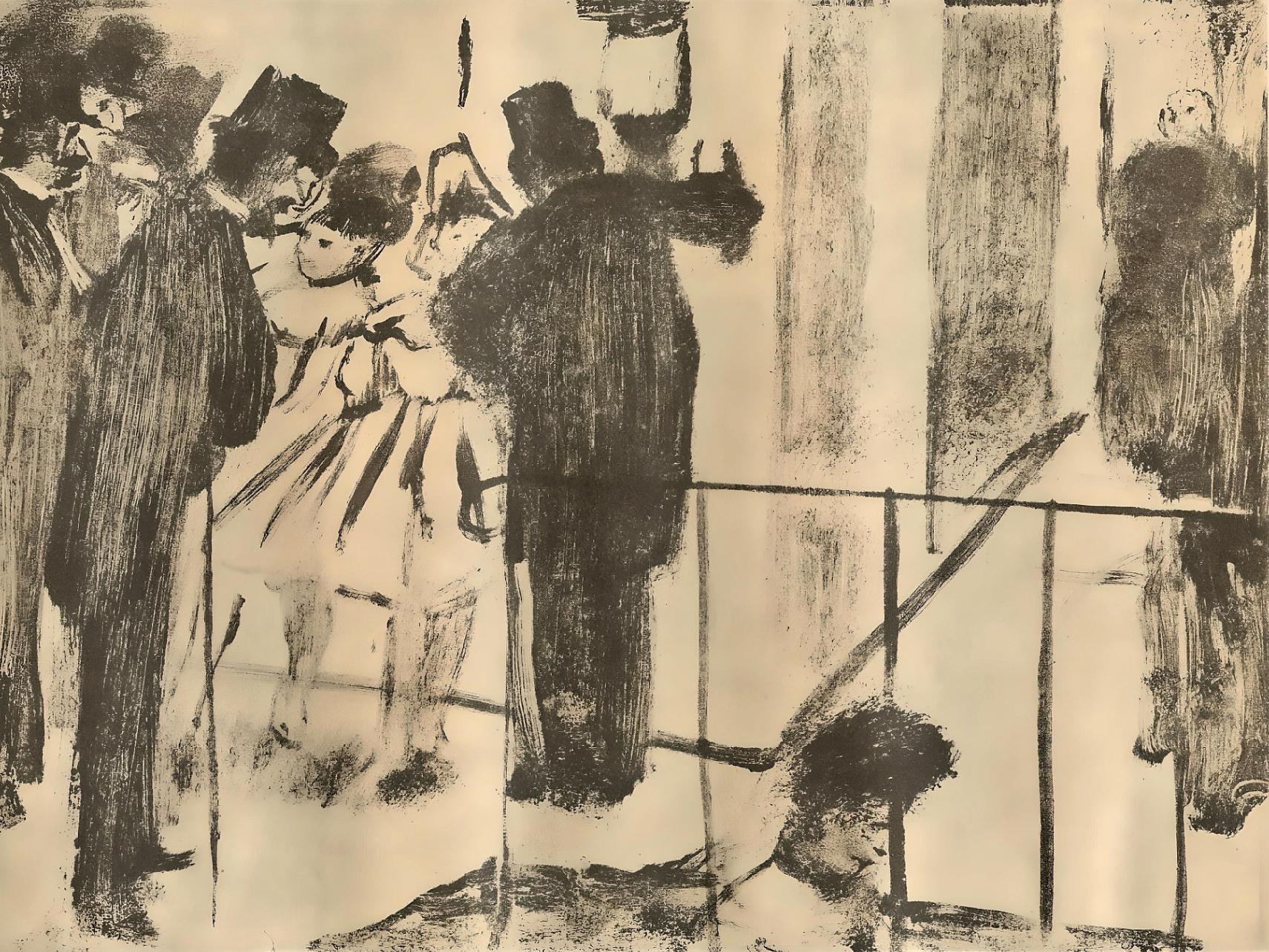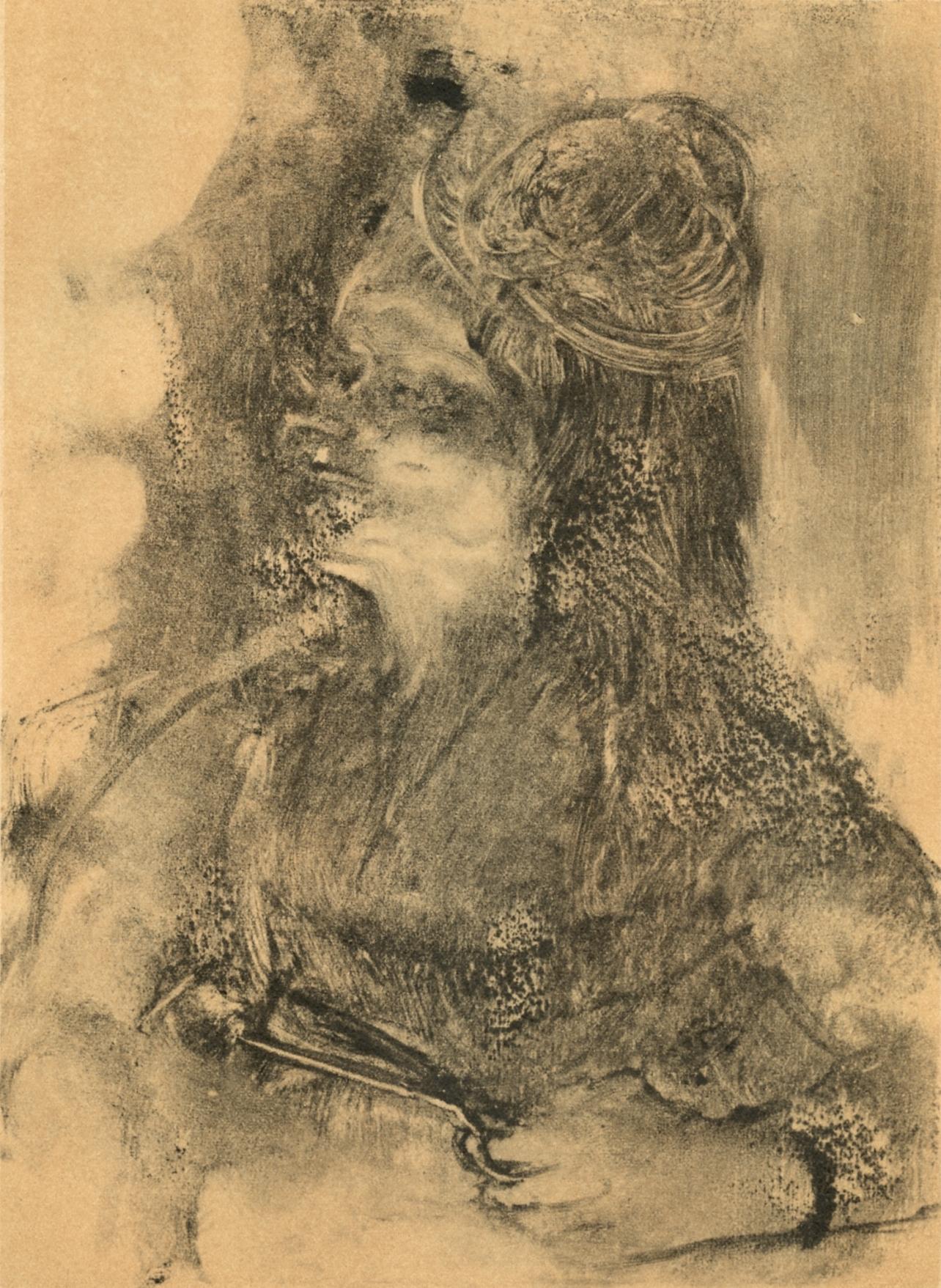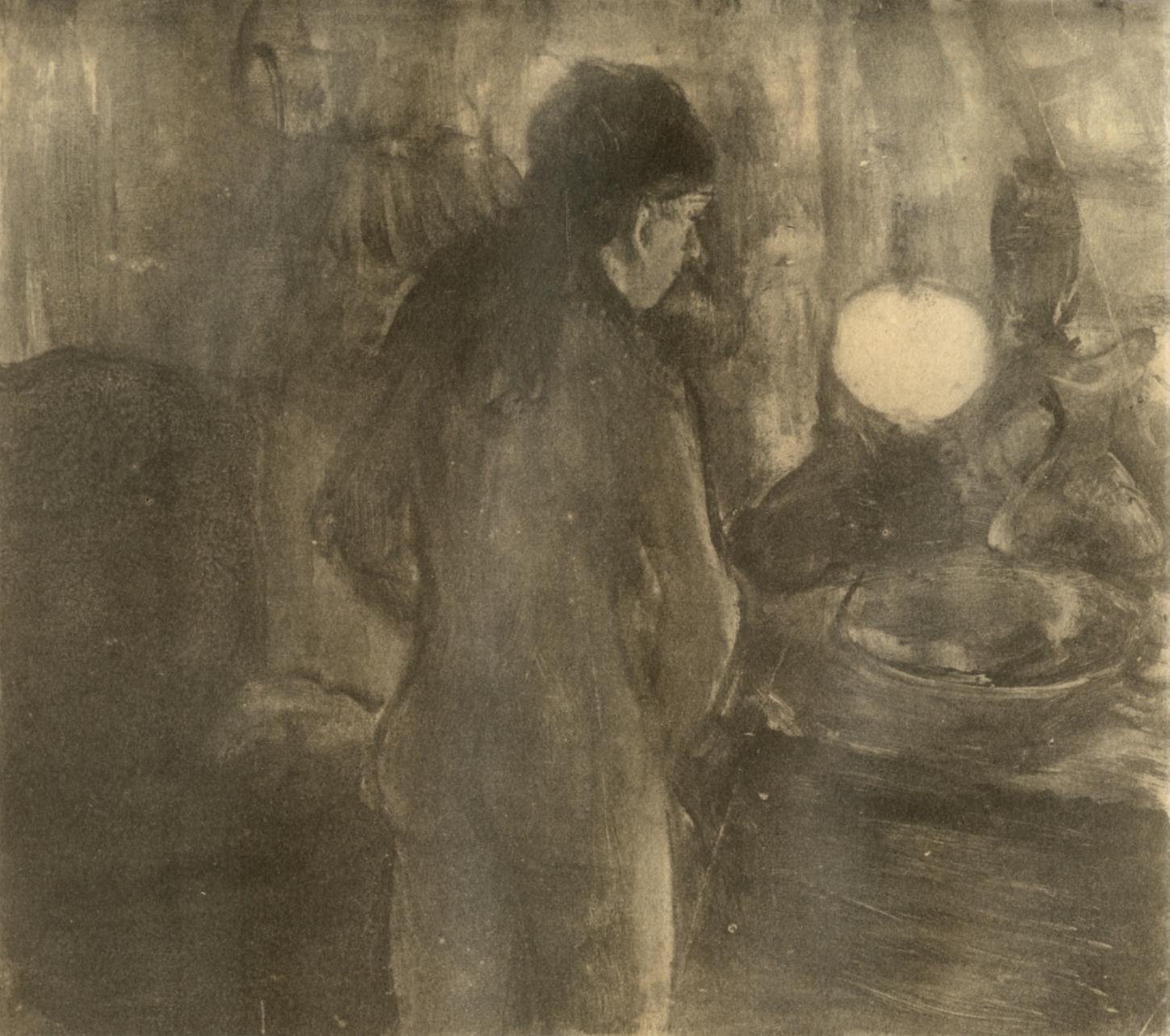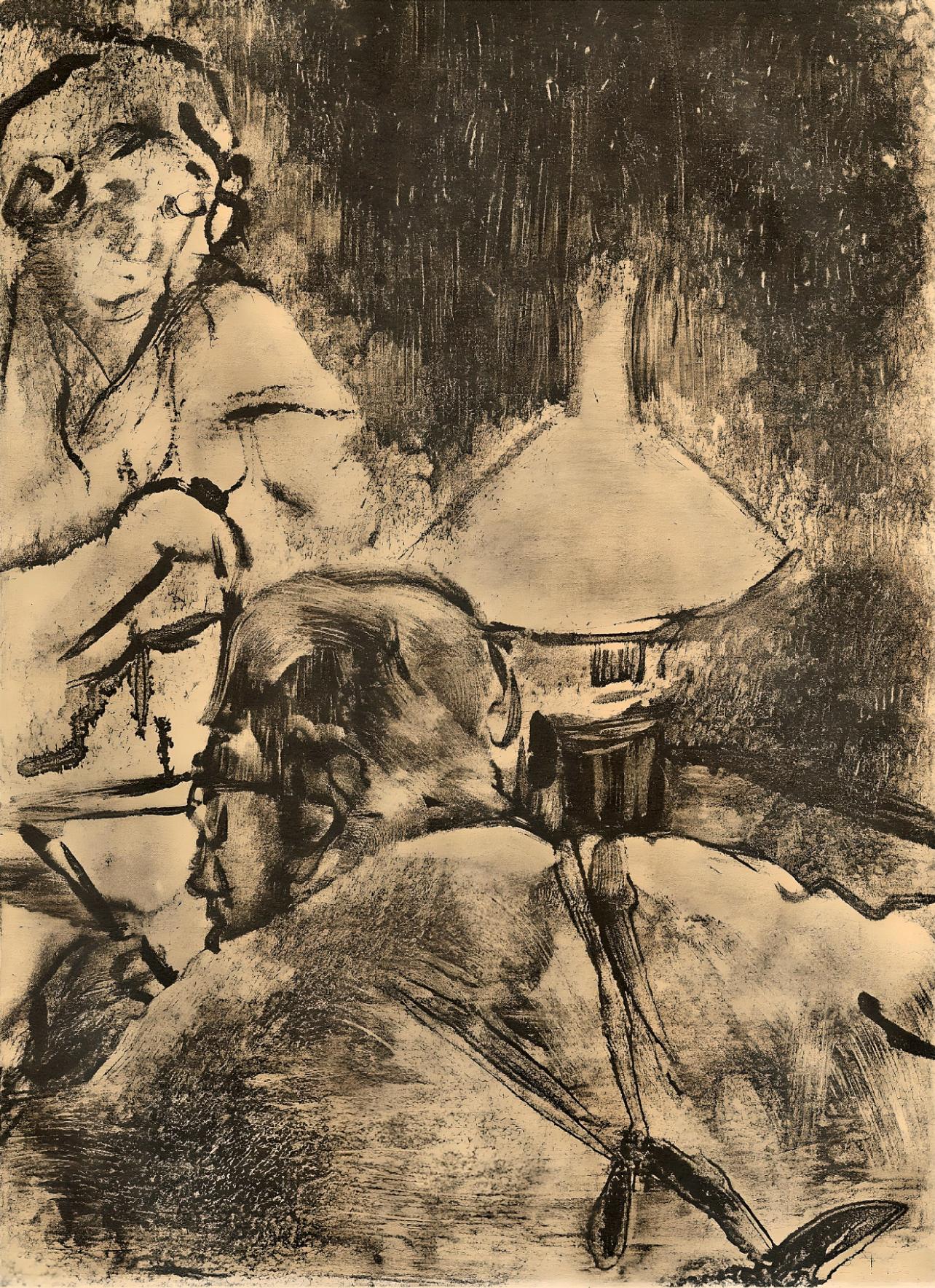Items Similar to Degas, Famille Cardinal, Les Monotypes (after)
Want more images or videos?
Request additional images or videos from the seller
1 of 6
Degas, Famille Cardinal, Les Monotypes (after)1948
1948
About the Item
Engraving on Marais vélin paper. Unsigned and unnumbered, as issued. Good Condition; never framed or matted. Notes: From the volume, E. Degas Les Monotypes, 1948. Published by Quatre Chemins-Editart, Paris; printed by Les Ateliers G. Bouan, and Dreux-Barry, Paris, February 1948. Excepted from the volume (translated from French), It was taken from this work 1,000 numbered copies. The fac-similés were executed by the art printing G. Bouan and colours by les ateliers Dreux-Barry finished printing in February 1948. The numbered copies of 1 a 500 have been printed for Shoman Art Company, Elmhurst, Long Island, New York.
EDGAR DEGAS (1834-1917) was a French Impressionist artist famous for his pastel drawings and oil paintings. Degas also produced bronze sculptures, prints, and drawings. Degas is especially identified with the subject of dance; more than half of his works depict dancers. Although Degas is regarded as one of the founders of Impressionism, he rejected the term, preferring to be called a realist, and did not paint outdoors as many Impressionists did. Degas was a superb draftsman, and particularly masterly in depicting movement, as can be seen in his rendition of dancers and bathing female nudes. In addition to ballet dancers and bathing women, Degas painted racehorses and racing jockeys, as well as portraits. His portraits are notable for their psychological complexity and their portrayal of human isolation. At the beginning of his career, Degas wanted to be a history painter, a calling for which he was well prepared by his rigorous academic training and close study of classical Western art. In his early thirties he changed course, and by bringing the traditional methods of a history painter to bear on contemporary subject matter, he became a classical painter of modern life. Generations of artists, including Picasso, have been influenced by Degas.
- Creation Year:1948
- Dimensions:Height: 8 in (20.32 cm)Width: 6.25 in (15.88 cm)
- Medium:
- Movement & Style:
- After:Edgar Degas (1834-1917, French)
- Period:
- Condition:
- Gallery Location:Auburn Hills, MI
- Reference Number:1stDibs: LU1465214201082
About the Seller
4.9
Platinum Seller
These expertly vetted sellers are 1stDibs' most experienced sellers and are rated highest by our customers.
Established in 2002
1stDibs seller since 2021
857 sales on 1stDibs
Typical response time: <1 hour
- ShippingRetrieving quote...Ships From: Auburn Hills, MI
- Return PolicyA return for this item may be initiated within 1 day of delivery.
More From This SellerView All
- Degas, La Danseuse de dos, Les Monotypes (after)By Edgar DegasLocated in Auburn Hills, MIEngraving on Marais vélin paper. Unsigned and unnumbered, as issued. Good Condition; never framed or matted. Notes: From the volume, E. Degas Les Monotypes, 1948. Published by Quatre...Category
1940s Impressionist Interior Prints
MaterialsEngraving
- Degas, Attente, Les Monotypes (after)By Edgar DegasLocated in Auburn Hills, MIEngraving on Marais vélin paper. Unsigned and unnumbered, as issued. Good Condition; never framed or matted. Notes: From the volume, E. Degas Les Monotypes, 1948. Published by Quatre...Category
1940s Impressionist Interior Prints
MaterialsEngraving
- Degas, La Loge, Les Monotypes (after)By Edgar DegasLocated in Auburn Hills, MIEngraving on Marais vélin paper. Unsigned and unnumbered, as issued. Good Condition; never framed or matted. Notes: From the volume, E. Degas Les Monotypes, 1948. Published by Quatre...Category
1940s Impressionist Interior Prints
MaterialsEngraving
- Degas, La Toilette, Les Monotypes (after)By Edgar DegasLocated in Auburn Hills, MIEngraving on Marais vélin paper. Unsigned and unnumbered, as issued. Good Condition; never framed or matted. Notes: From the volume, E. Degas Les Monotypes, 1948. Published by Quatre...Category
1940s Impressionist Interior Prints
MaterialsEngraving
- Degas, Nu debout, Les Monotypes (after)By Edgar DegasLocated in Auburn Hills, MIEngraving on Marais vélin paper. Unsigned and unnumbered, as issued. Good Condition; never framed or matted. Notes: From the volume, E. Degas Les Monotypes, 1948. Published by Quatre...Category
1940s Impressionist Interior Prints
MaterialsEngraving
- Degas, Famille Cardinal, Les Monotypes (after)By Edgar DegasLocated in Auburn Hills, MIEngraving on Marais vélin paper. Unsigned and unnumbered, as issued. Good Condition; never framed or matted. Notes: From the volume, E. Degas Les Monotypes, 1948. Published by Quatre...Category
1940s Impressionist Interior Prints
MaterialsEngraving
You May Also Like
- "City Market" Juarez, Mexico El Paso Texas Artist extrememly detailed etchingBy Lewis Teel Jr.Located in San Antonio, TXLewis Teel Jr. 1913-1995 El Paso Artist Image Size: 9 x 7 Frame Size: 16 x 14 Medium: Etching Circa 1930s "City Market" Juarez, Mexico Biography Lewis Teel Jr. 1913-1995 Lewis Woods...Category
1930s Impressionist Interior Prints
MaterialsEtching
- Women at PrayerBy Robert Sargent Austin, R.A., P.R.E., P.R.W.S.Located in Storrs, CT10 15/16 x 8 7/16 (sheet 13 13/16 x 10 13/16). Subsequent to Dodgson. Edition 40 published by the Twenty-One Gallery for 7 guineas. Illustrated: Fine Prints of the Year, 1936. A rich...Category
1930s Renaissance Figurative Prints
MaterialsEngraving
- "King of the Friendly Islands" (Tonga); Engraving from Captain Cook's 3rd VoyageBy John WebberLocated in Alamo, CA"Poulaho, King of the Friendly Islands, Drinking Kava" is an engraving created by William Sharp (1749-1824), from a drawing by John Webber (1752-1793), who was the artist on Captain James Cook's 3rd and final voyage of discovery. It was published in the atlas of "A Voyage to the Pacific Ocean Undertaken by the Command of His Majesty, for Making Discoveries in the Northern Hemisphere", the official British Admirality sanctioned journal published upon completion of the voyage in London in 1784 by Strahan & Cadell. Captain Cook visited Tonga on his 3rd voyage, which he named The Friendly Islands because of the warm welcome he and his crew received, unlike some of the other more hostile Pacific islands. The engraving depicts Cook and his men observed a kava ceremony at the village of Mu’a on Tongatapu. King Paulaho sits in the centre foreground, his back to the spectator with a man kneeling before him. The ceremonial mat depicted behind Paulaho indicates that nobody was allowed to sit behind him. The figure in the centre holds a single cup, referring to the Tongan custom of offering the cup to the king first. Kava is native to the islands of the South Pacific and was first described for English readers in 1768 by Captain James Cook. The kava root has been used for centuries as a central feature of ceremonies and celebrations because it was able to bring about a calming and pleasant social atmosphere. The root was crushed and processed into coconut milk to become the focal ceremonial beverage, simply referred to as kava. This engraving is presented in a Koa wood frame and a white mat. Koa wood is legendary in Hawaii. There are occasional faint spots, but the print is otherwise in very good condition. This amazing Koa wood is native to Hawaii and it is known for the deep rich colors and varied grain pattern. Koa has an honored heritage in Hawaii and is highly revered and sacred. The word “koa” means “warrior” in Hawaiian. The warriors of King Kamehameha the Great, created canoes and weapons from a wood plentiful on the Big Island of Hawaii. This wood became synonymous with the warriors themselves, and it became known as koa. There are three other engravings listed from the official journal of Captain Cook's 3rd voyage available that are presented in identical Koa wood frames and mats (LU117324682422, LU117324684052, LU117324684032). They would make a wonderful grouping for a display of 2, 3 or 4 prints. A discount is available for a grouping depending on the number of items included. Captain Cook is remembered as one of the greatest explorers and navigators in history. His explorations included Australia, New Zealand and islands of the South Pacific and the northwest coast of North America. Hawaii was discovered by Captain Cook during this voyage. Hawaii was originally called The Sandwich Islands in honor of The Earl of Sandwich...Category
1780s Realist Figurative Prints
MaterialsEngraving
- Adele and the Ladies (Rochester's fashion conscious ward in Jane Eyre)By Fritz EichenbergLocated in New Orleans, LAAdele, the 10 year-old girl who may be the daughter of Rochester and Celine in "Jane Eyre" is being scrutinized by three women. One is seated on an ornate sofa...Category
Early 20th Century American Modern Figurative Prints
MaterialsWool, Engraving
- SportsmenBy Louis LegrandLocated in Storrs, CTSportsmen. 1908. Etching and drypoint. Exsteens 271.i/ii. 11 1/4 x 5 3/4 (sheet 17 3/8 x 12 1/4). Series: Les Bars. From the first state edition of 30 proofs with the remarque sketch...Category
Early 1900s Post-Impressionist Figurative Prints
MaterialsDrypoint, Etching
- "Inspection Tour in the Wine Vaults", 1876 Philadelphia Centennial ExpositionLocated in Alamo, CAThis engraving is entitled "Philadelphia, PA- The Centennial Exposition - the Jury of Award on an Inspection Tour in the Wine Vaults of Agricultural Hall", ...Category
Late 19th Century Naturalistic Interior Prints
MaterialsEngraving





